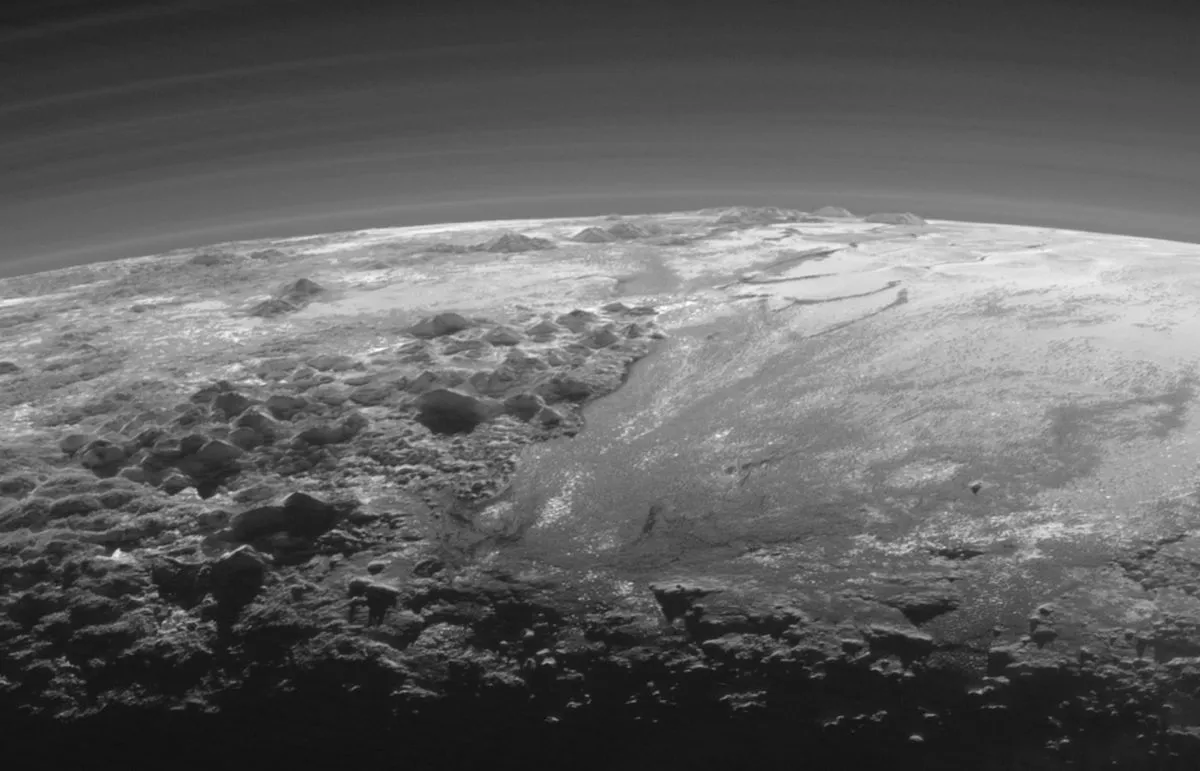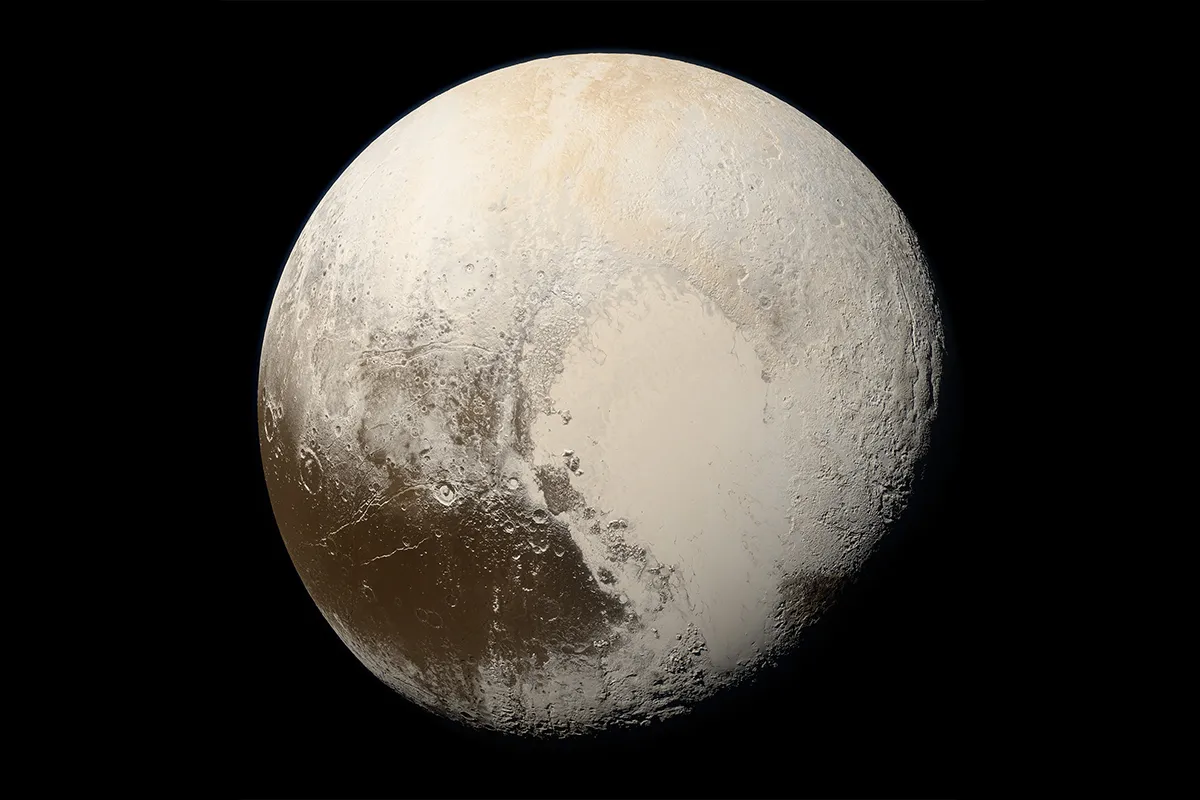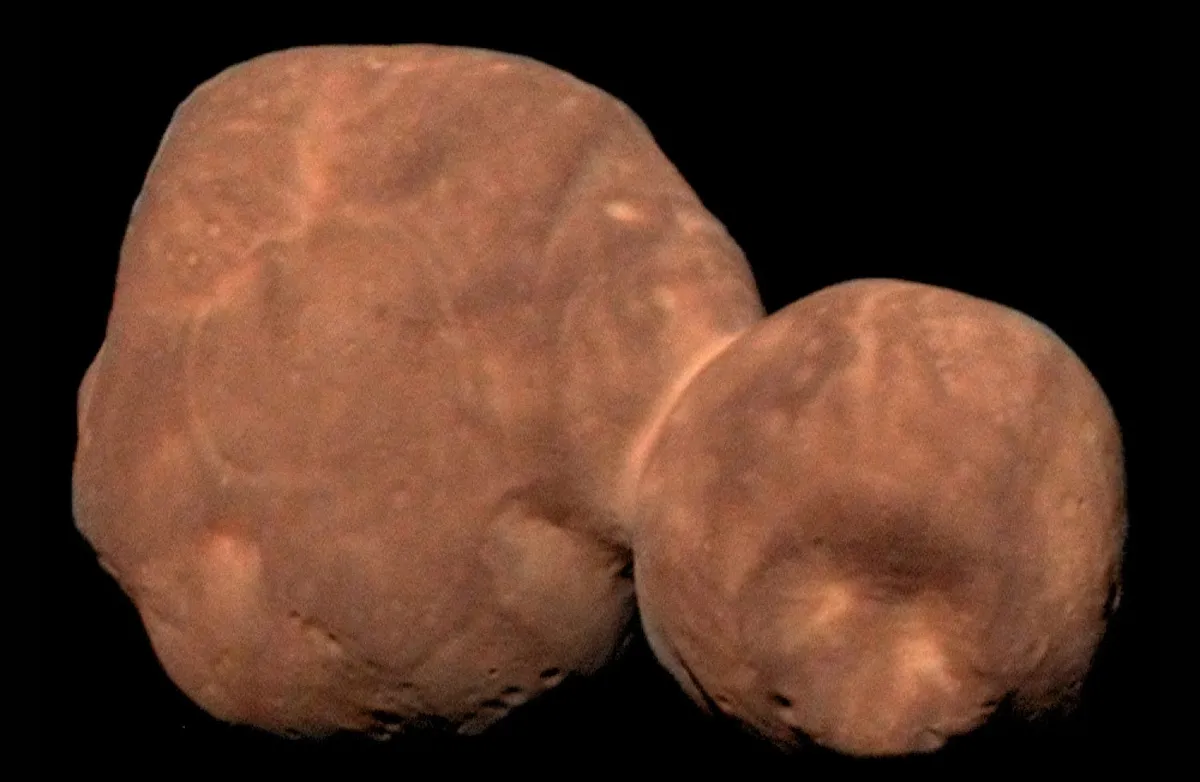New Horizons was the first mission sent to explore Pluto, conducting a fly-by in July 2015.
It was then redirected for a close pass of a much smaller Kuiper Belt object, Arrokoth, in January 2019.
More New Horizons science

Today, it’s over 61 AU away – almost twice as distant as Pluto – and racing from the Sun at around 50,000km/h (31,000mph), meaning that it covers the equivalent of the Earth–Sun distance every four months.
It’s the fifth robotic spacecraft that we humans have launched on an escape trajectory that will ultimately leave the Solar System altogether and enter interstellar space.

A shift in star position
Indeed, the craft is already so remote that nearby stars appear to shift in position when viewed from the spacecraft, compared to how we see them from Earth.
This displacement in the apparent position of objects seen from two vantage points is known as parallax.

You can create this effect for yourself with a simple experiment: hold a finger at arm’s length and alternate closing each eye.
The finger appears to jump back and forth against the more distant background, because each eye sees it from a slightly different angle.
You can also demonstrate this by carrying out our parallax measurement experiment.
New Horizons sees things differently

Tod Lauer, at the NSF National Optical-Infrared Astronomy Research Laboratory in Tucson, Arizona, led a team of 53 co-authors from 46 institutions to demonstrate stellar parallax between New Horizons and Earth.
They did this by coordinating the probe to photograph two nearby stars with images taken simultaneously from ground-based observatories.
The team commanded New Horizons’ LORRI (Long Range Reconnaissance Imager) camera to photograph the nearest star to the Solar System – Proxima Centauri, 4.25 lightyears away – on 22 April 2020.

The timing coincided with new Moon conditions, allowing for simultaneous observations using the 0.4-metre (1.3ft) telescope at Siding Spring, the Australian node of the Las Cumbres Observatory global network.
The following day, LORRI imaged another nearby star – Wolf 359, 7.86 lightyears away – at the same time as the University of Louisville 0.6-metre (2ft) Manner Telescope at Mount Lemmon Observatory, near Tucson.
Proxima Centauri appears to shift the most between Earth’s and New Horizons’ viewpoints, with an observed parallax of 32.4 arcseconds (0.009°), whereas the more distant Wolf 359 has a parallax of about half as much, at 15.7 arcseconds (0.004°).

With the shifts in just these two star positions, the researchers were able to calculate the 3D position in space of New Horizons using stellar parallax and the extremely accurate map of our galactic neighbourhood produced by the Gaia space telescope.
Lauer says this is the first time such a technique has been used to locate a spacecraft with respect to nearby stars.
And their calculation of New Horizons’ range of 46.9 AU was just 0.5% off that determined precisely by tracking from NASA’s Deep Space Network of radio dishes.
For centuries, humans have navigated the world by treating the stars as fixed points on the celestial sphere.
What Lauer and his colleagues have demonstrated for the first time is navigation based on stellar parallax, as the stars themselves seem to shift over immense distances.
And this technique will become enormously important as we come to sail the cosmic ocean on interstellar voyages.
Lewis Dartnell was reading A Demonstration of Interstellar Navigation Using New Horizons by Tod R Lauer, David H Munro et al. Read it online at: arxiv.org/abs/2506.21666.
This article appeared in the October 2025 issue of BBC Sky at Night Magazine

